Toyota Sienna Vs Chrysler Pacifica and Rivals: How Does It Stack Up?

The 2021 Toyota Sienna is an all-hybrid entry into a segment that will be almost completely transformed for 2021.
With everything that’s gone down in 2020, few people would’ve expected the minivan sector of all things to get heated. But here we are. The Toyota Sienna is all-new, leveraging the Japanese automaker’s hybrid expertise in the segment for the first time. Not only that, but it will only be available as a hybrid.
Not that the Sienna will be the first hybrid minivan: that distinction goes to the Chrysler Pacifica. It’s fitting that the company remains in the segment it created over 35 years ago, and the Pacifica gets its own round of substantial upgrades for 2021.
We’re also including the Sienna’s erstwhile competitor, the Honda Odyssey, in this spec comparo. The Odyssey is the odd one out here: with a refresh just last year, it heads into 2021 with the slightest of changes. It remains a strong contender though, and is a known quantity.
The same cannot be said of our final competitor here, the 2022 Kia Sedona. Kia has released precious little on the boxy new model so far, only showing off its sharp exterior design. We’ll be updating this face-off as more information comes out, and use current-generation information where we have to.
Alright, let’s see what these big boxes on wheels are all capable of.
By The Measurements
dimension | Toyota Sienna (2020) | Chrysler Pacifica (2021) | Honda Odyssey (2021) | Kia Sedona (2021) |
|---|---|---|---|---|
length | 200.6 in | 204.3 in | 203.2 in | 201.4 in |
width | 78.1 in | 79.6 in | 78.5 in | 78.1 in |
height | 68.7–71.3 in | 69.9–70.7 in | 68.3–69.6 in | 68.5–69.1 in |
wheelbase | 119.3 in | 121.6 in | 118.1 in | 120.5 in |
curb weight | 4,505–4,750 lb | 4,521–5,010 lb | 4,354–4,593 lb | 4,411–4,736 lb |
headroom (f/r) | 41.0/39.7/38.3 in | 40.1/39.6/38.7 in | 40.7/39.5/38.3 in | 39.8/39.4/38.9 in |
legroom (f/r) | 40.5/37.6/36.3 in | 41.1/39.0/36.5 in | 40.9/40.9/38.1 in | 40.9/41.1/34.8 in |
shoulder room (f/r) | 65.0/64.6/61.1 in | 63.8/63.0/61.2 in | 63.1/61.6/60.0 in | 63.9/63.1/59.4 in |
trunk space | 39.1/87.1/150.0 cu-ft | 32.3/87.5/140.5 cu-ft | 38.6/92.0/158.0 cu-ft | 33.9/78.4/142.0 cu-ft |
Disclaimer: At the time of publishing both Toyota and Kia were still holding onto the measurements for their new-age minivans. We’ve used the current-gen, 2020 measurements here, but will update as soon as we know more.
There’s nothing particularly “mini” about any of these vans these days. The smallest one right now is the Sienna at 200 inches and change—and that’s the current-gen model. We’ve spent time poking around the 2021 Sienna, and while it certainly looks and feels bigger in every way, without a tape measure handy we can’t confirm. The same goes with the Kia Sedona: its bluff new shape for 2022 implies even more spaciousness, but for now we’ll go with the current model’s measurements.
The useful flip-side to the gargantuan proportions of this quartet: they’re all the definition of “spacious.” You’ll find so much space in any of them, even in the third row—which we want to stress is still typically cramped in three-row SUVs. Sticking strictly to numbers however, the winner is the Honda Odyssey. If it doesn’t top the charts in any one measurement, it’s not far off the best. It also offers the most storage space. An important note on that though: while all feature easy-folding third row seating, only the Chrysler offers the same for the middle row. The others require you to pull the hefty thrones out, and find somewhere to store them.
The Pacifica’s chunkiest curb weight is the product of its plug-in hybrid system. For 2021 it will also offer AWD with the standard V6 engine, which tips the scales at 4,883 lb. The Sienna bundles both hybrid power and AWD together, so we expect it to weigh at least as much as the Pacifica Hybrid.
SEE ALSO: 2020 Toyota Sienna ReviewEngine and Drivetrain
performance | Toyota Sienna (2021) | Chrysler Pacifica (2021) | Honda Odyssey (2021) | Kia Sedona (2021) |
|---|---|---|---|---|
engine | 2.5L I4 w/ hybrid | 3.6L V6 / 3.6L V6 w/ plug-in hybrid | 3.5L V6 | 3.3L V6 |
horsepower | 243 hp | 287 / 260 hp | 280 hp | 276 hp |
torque | 175 lb-ft | 262 / 230 (est) lb-ft | 262 lb-ft | 248 lb-ft |
transmission | eCVT | nine-speed automatic / eCVT | 10-speed automatic | eight-speed automatic |
mpg | 33 combined (FWD), N/A (AWD) | 19/28/22 (FWD), N/A (AWD), 30 combined (hybrid) | 19/28/22 | 18/24/21 |
towing rating | 3,500 lb | 3,600 / N/A lb | 3,500 lb | 3,500 lb |
Toyota is vacating the title of “most powerful minivan” by ditching the 296-horsepower V6 in the Sienna for 2021. We don’t think many people will be bothered. We’ve tried both the V6 and hybrid setup in the Highlander—which shares its platform with the Sienna—and there’s little between the two on the road. Like its crossover sibling, the Sienna comes in either front- or all-wheel drive forms. There are two electric motors in the front-drive model, while the AWD Sienna gets an extra one out back, for on-demand traction. It offers a good slug of electron-backed torque off the line and at city speeds, and Toyota has even made its CVT a fairly smooth operator. Perhaps best of all, the all-hybrid Sienna sacrifices zero towing capacity over the old model, sticking to a 3,500-pound rating. Toyota is targeting a 33 mpg average, roughly 50-percent better than the Odyssey or existing Sedona.
SEE ALSO: 2019 Chrysler Pacifica ReviewThe other hybrid of the pack, the Chrysler Pacifica, can’t match that average mileage rating. However, it offers something the Sienna doesn’t: plug-in power. Thanks to its lithium-ion battery, the Pacifica can travel up to 32 miles in pure EV mode. Depending on your usage, you could be going much longer between fill-ups than anything else here. The EPA rates the Pacifica Hybrid at 82 mpg-equivalent. Stick to the V6 and it features more expected numbers: 19 mpg city, 28 highway, and a combined rating of 22. That’s in front-drive form; we don’t have figures on the all-paw version quite yet. A small but important distinction: the V6 Pacifica tops the towing chart with an extra 100 pounds, at 3,600 total. Chrysler doesn’t recommend pulling anything at all with the hybrid, however.
Honda’s Odyssey matches the Pacifica’s numbers exactly. It gives up seven ponies to the American van, but matches it on torque. That typical Honda snarl is on tap too, if you’re in the mood to explore the higher end of the rev range. The Odyssey gets an additional gear in its ‘box over the Chrysler too, with 10 forward ratios. It sticks to front-drive only.
Kia’s current Sedona uses a smaller 3.3-liter V6. It lags behind the others, if even only slightly, in power, torque, and fuel efficiency. The Korean automaker hasn’t hinted at what sort of drivetrain will find its way under the fourth-generation model. What we do know is that the Sorento crossover will be getting a hybrid model; it’s not outside the realm of possibility that Kia picks a similar setup for its big people-mover. We’ll have to wait and see.
Technology and Features
Disclaimer: At the time of publishing there is zero information on the 2022 Sedona’s tech and safety features. To simplify we’re skipping it in this section, though we’ll be updating as Kia releases more info.
The primary role of a minivan is to move you and the family in the utmost comfort. That’s a tall order in these always-connected, multi-tasking, paradigm-shifting, any-other-buzzword times. Luckily every one of these minivans can come loaded to the gills with enough convenience features to make them rolling living rooms.
SEE ALSO: Honda Odyssey vs Toyota Sienna: Which Minivan is Right for You?Before we get to that though, let’s talk safety. Honda’s updated the Odyssey ahead of the 2021 showdown, and that includes making Honda Sensing standard across all trims. Previously, you had to step up to the EX or above to get the safety suite, which includes automated emergency braking, lane keep assist, lane departure alert, and auto high beams. Adaptive cruise control with low-speed follow and pedestrian emergency braking join the Honda Sensing lineup for 2021.
As this is a slight facelift over the existing Odyssey, Honda expects the van to earn another five-star safety rating from the NHTSA and a Top Safety Pick from the IIHS.
The Pacifica is also a facelift for 2021, though a more substantial one. Chrysler has bundled in what it says is 97 standard safety features. This includes a similar suite of safety assists (AEB, lane assists, adaptive cruise control with stop and go, automatic high beams), plus rain-sensing wipers and a third-row lock out. The latter makes it so the rear-most row can’t be accidentally stowed or deployed.
SEE ALSO: 2018 Honda Odyssey ReviewThen there’s the Sienna. The new TNGA platform brings with it the Toyota SafetySense 2.0 suite, with all the typical assists found on the Chrysler and Honda. In addition, the Sienna will include blind-spot monitoring, rear cross-traffic alert, lane trace assist, and road sign recognition on all trims. Early advantage: Toyota.
It’s a whole different ball game with convenience features. It’s important to note many are trim-specific, including things like larger infotainment systems. The Pacifica leads the way in this field, with the first available application of Chrysler’s Uconnect 5 system. With a screen up to 10.1 inches across it isn’t the biggest, but Uconnect is one of our favorite systems on the market. The fifth iteration is faster and more cleanly-styled than before, and is the only one of the group to allow for wireless Android Auto and Apple CarPlay. You’ll need those cords for the others.
The Sienna, Pacifica, and Odyssey all feature available built-in vacuums to handle spills and messes. Toyota takes a different approach with its version though, as it plugs into the console at the front of the second row. The others connect in the trunk. This should make it easier to clean up spills where they’re more likely to happen.
SEE ALSO: 2020 Toyota Highlander First Drive ReviewAll three vans also feature some level of second-row entertainment. The Honda and Toyota stick to a single overhead screen, with streaming and physical media capability. The Pacifica goes a step further with two seat-mounted touchscreens, which allow for videos as well as built-in games. A WiFi hot spot is available on all three models, and each comes littered with charge points (including optional wireless ones).
Keeping an eye on the way-back is possible in the Honda and Chrysler thanks to an available third-row camera system. Chrysler’s “FamCam” in particular lets you zoom in on any occupant via the front infotainment screen, including rear-facing child seats. The Honda and Toyota both offer in-vehicle PA systems to make it easier to talk to the rows behind too.
Looking for extra comfort? The Pacifica Pinnacle adds a few lumbar support pillows in matching Caramel leather for its second row. Meanwhile the Sienna offers available ottomans in higher trims. The Toyota can also come with a second-row fridge/freezer.
Pricing
None of the automakers have announced pricing on their new models yet. As of July 2020 the Kia is the value proposition, kicking off at $28,720 after destination. That discount price means zero active safety assists however. When the 2022 model drops, we expect it to still hold a price advantage over the others—this is Kia after all—but the gap should be much smaller.
The Sienna is unlikely to be the cheapest model in 2021 either. Toyota has worked hard to close the gap in sticker price between conventional and hybrid power, but the mandatory battery-assisted setup will bump the price up. The Sienna also gets improved standard safety and a higher quality interior. Expect a starting price a few thousand higher than today’s $32,760 entry point.
Honda currently asks for $31,910 to get into the sliding doors of the Odyssey. Given it has the slightest year-over-year changes of the pack, we don’t expect that number to budge much for 2021. Currently the lineup tops out at $48,540 for the Elite trim.
And then there’s the Pacifica. Chrysler’s minivan has the highest starting price in 2020 ($35,540), unless you count the de-contented Voyager—which we’re not. The Chrysler does offer a more high-end interior however, especially once you start exploring the higher trims. The 2021 model introduces a new Pinnacle trim at the top, and it feels positively luxurious.
In their top trims, we expect all of these minivans to crack the $50k mark. That’s a lot of cash, but when it comes to moving a lot of people and their stuff, there’s no other class of vehicle better suited to the task.
Become an AutoGuide insider. Get the latest from the automotive world first by subscribing to our newsletter here.

Kyle began his automotive obsession before he even started school, courtesy of a remote control Porsche and various LEGO sets. He later studied advertising and graphic design at Humber College, which led him to writing about cars (both real and digital). He is now a proud member of the Automobile Journalists Association of Canada (AJAC), where he was the Journalist of the Year runner-up for 2021.
More by Kyle Patrick



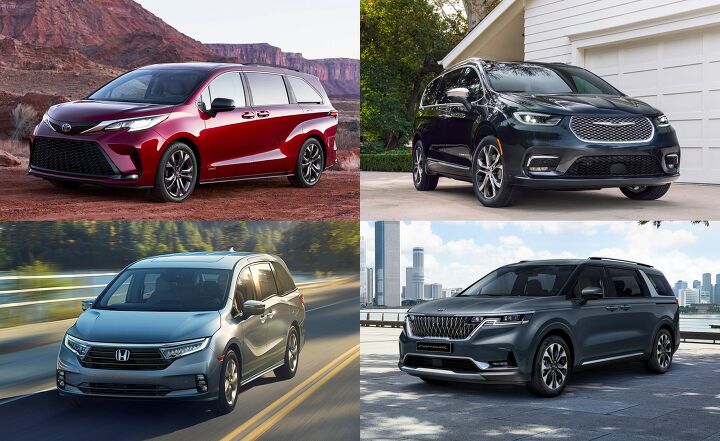






















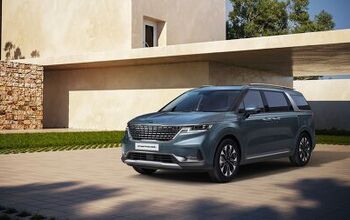
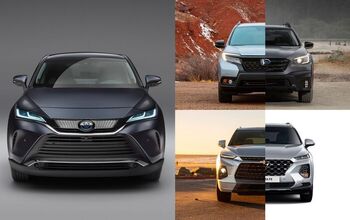
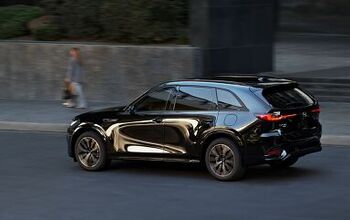

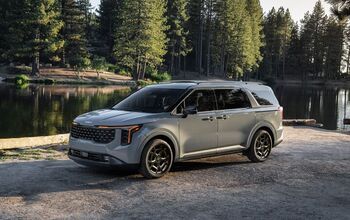
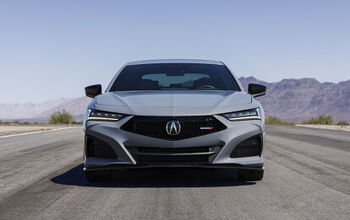
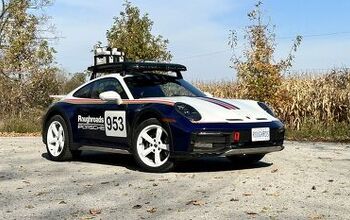



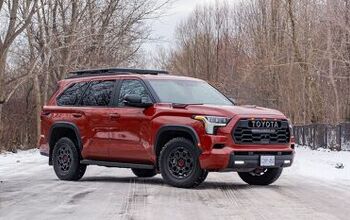


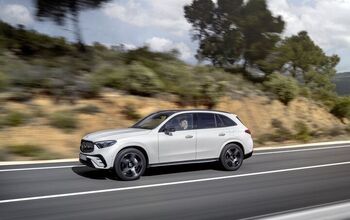

Comments
Join the conversation